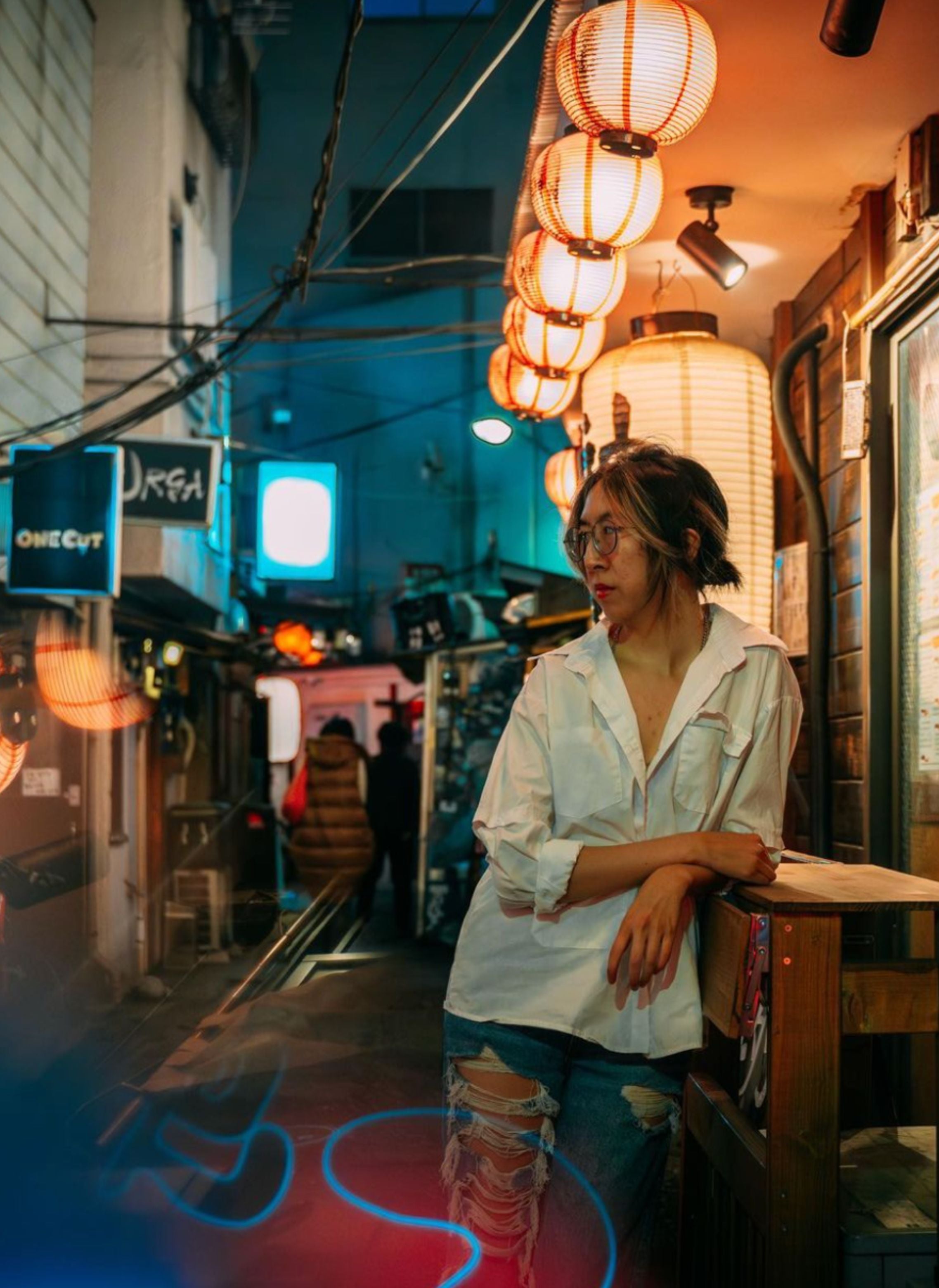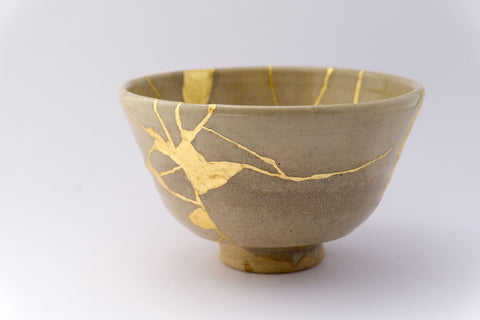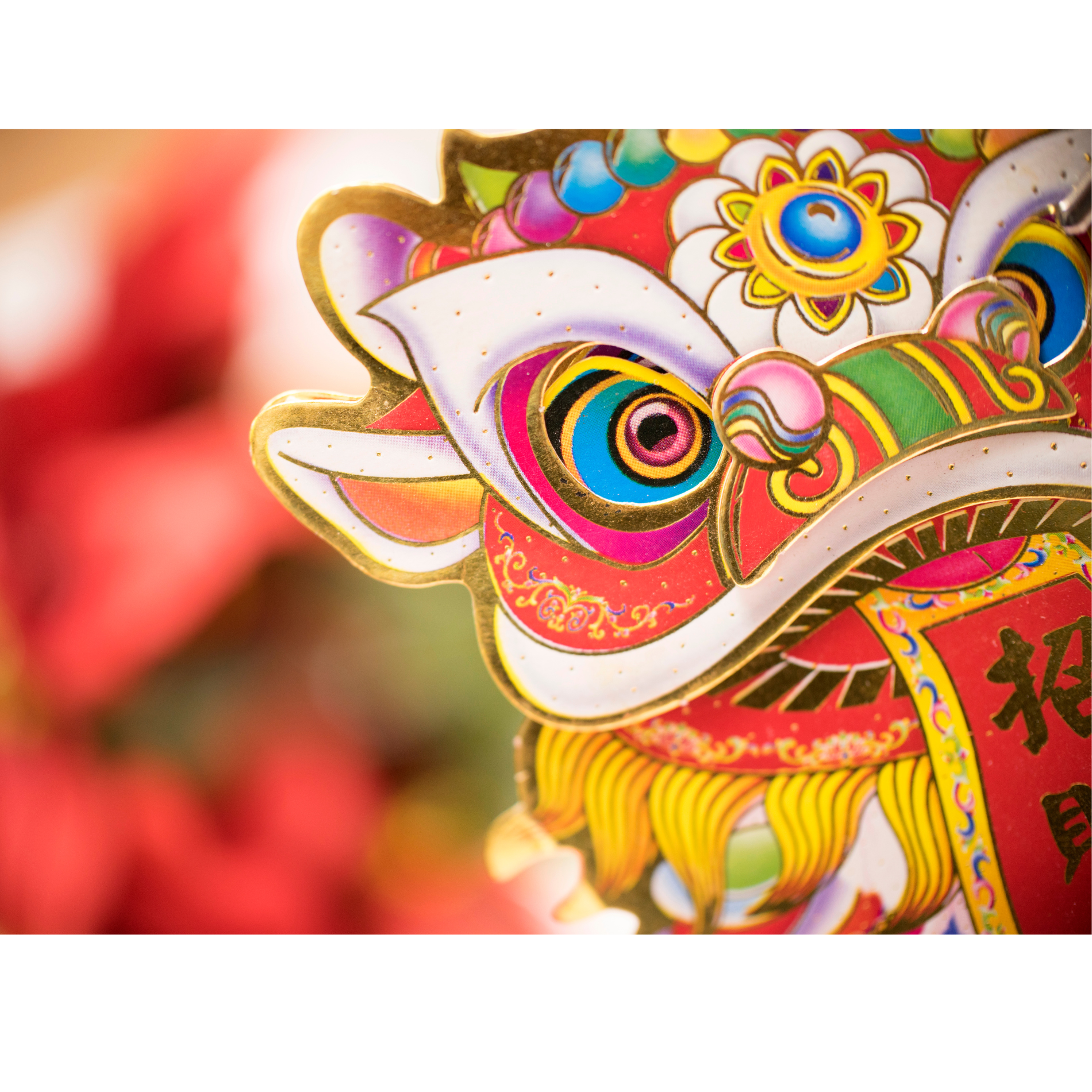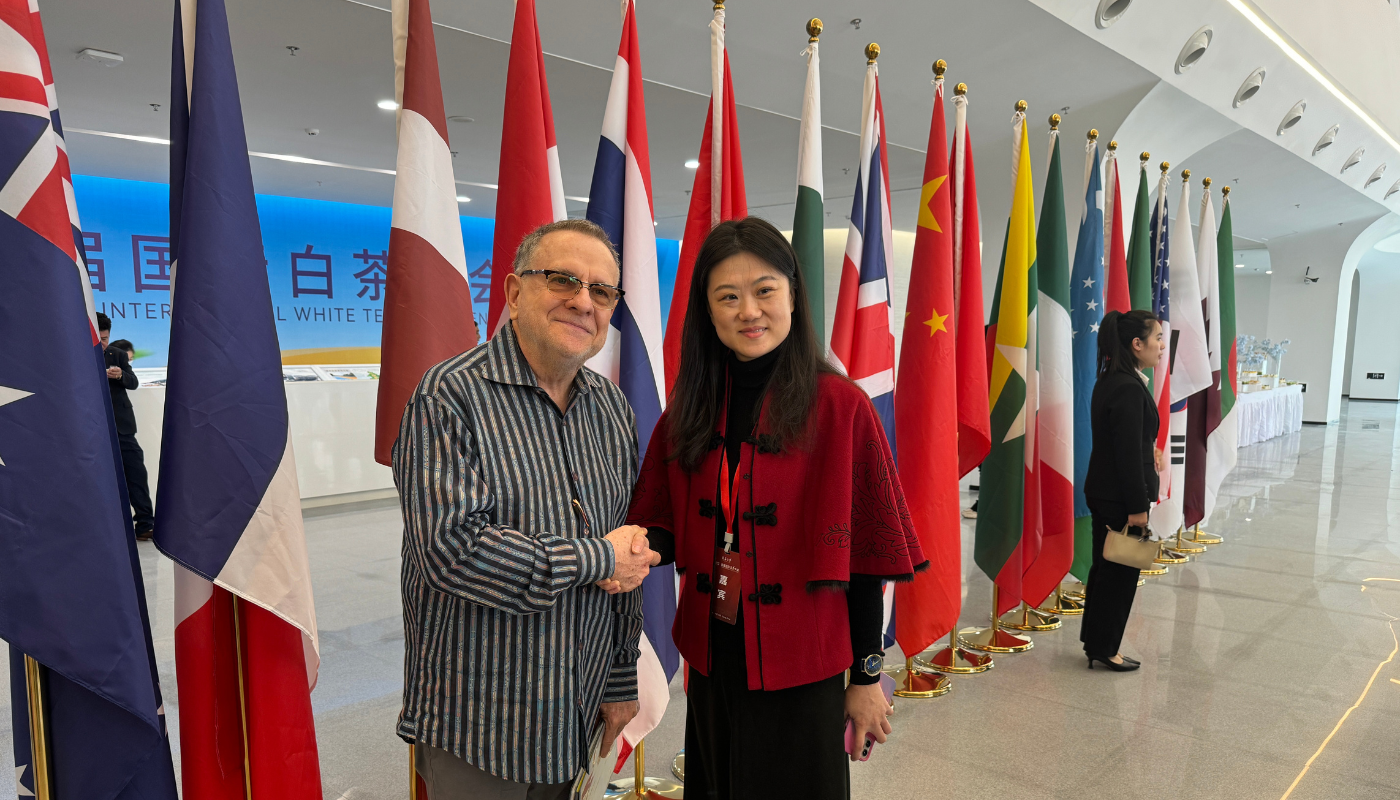Matcha, Kintsugi, and Weekends at Grandma's

On Thursday, November 9th, 2023, I sat on my knees in a small room, hands clenched loosely on my thighs as I fought to keep my feet from losing circulation. I kept my eyes downturned to avoid looking anyone in the face, as if I could make myself disappear that way. A handful of other people sat with me to form a sort of ring around the perimeter of the room, and everyone there knew someone else. They were with their spouse, their family, a colleague—someone they knew. I was alone, and I was the only one who was alone, and though I doubt anyone else noticed, the difference was absolutely glaring to me.
I was waiting for the start of the kimono tea ceremony we were all there for. As a tea- lover, and as someone who’d never worn a kimono before that point, there was no way I wasn’t going to attend an event like that. But I hadn’t accounted for the distinct sense of isolation I would feel being the only loner of the group, even if the isolation was imagined on my part. And I hadn’t gotten over my social anxiety enough to make conversation with my neighbors without risking a heart attack (or worse—social rejection), so I could do nothing but shift my weight and pretend like I wasn’t there.

It was the eventual entrance of the tea master that was my saving grace from
awkwardness. Her name was Sayo, a petite woman with delicate features and smile lines around the eyes. Her English was exemplary, and she cracked subtle jokes with us until we all loosened up. She explained to us the history of the tea ceremony and its ties to Zen Buddhism. At one point, she gestured to a calligraphy scroll hanging in the alcove of the room, and she asked if anyone could read the characters written on it. I shyly raised my hand, though I wasn’t one hundred percent sure, and I offered, “Ichi-go ichi-e?” I saw her eyes shine with delight, and in that moment I felt a profound connection to her: we were the only two people who didn’t know at least one other person in the room, and we were the only two people who could repeat the phrase “ichi-go ichi-e” off the top of our heads.
“Ichi-go ichi-e” is an idiom that emphasizes the idea that every moment we experience is the only one of its kind—even if we’re in the same place, with the same people, doing the same thing all over again, no two moments will ever be the same. And because of that, we should cherish each moment for what it is, knowing it will never come again. Even if the moment isn’t perfect—because no moment is, nor should it be—it’s worth taking the time to really take it in, because its uniqueness is what’s special and sacred about it. And really, how much uniqueness
can you find in perfection, anyway?
Ichi-go ichi-e, Sayo-san told us, is a philosophy that is deeply embedded within the
traditional tea ceremony. It encourages the guest to sit in and with themself as they drink their tea and take in their surroundings, to really feel every sound and sensation that comes by. The Japanese tea ceremony is meant to be a meditative, holistic bodily experience, not just an experience for the taste buds. I suppose you could say the purpose of the tea ceremony is to enter the soul via the mouth.
After Sayo-san finished all her explanations and stories, we all made matcha together, complete with wagashi, traditional sweets to accompany the tea. Over the course of the event, I could see all of the guests slowly relax as we gave up on the desire to be seen as perfectly knowledgeable and experienced. No matter if we were a seasoned tea veteran or if we’d never touched a bamboo whisk in our life, we were all doing the same thing, in the same room. The casual and friendly environment along with Sayo-san’s comfortable expertise made it easy to
feel like we were in a room of peers, and not just strangers. The couple next to me were from Texas, just like me, and at one point the woman leaned over to me and said, “In Texas, you only find Earl Grey.” I laughed and retorted, “Or that stuff in the glass bottles,” and she laughed too.

By the end of the event, something had shifted—we were all still strangers to each other, but we were strangers who held a fragile and temporary bond, which is distinctly different from being just strangers. This was confirmed for me when I went outside onto the tiny little terrace of the teahouse, which had a red torī gate surrounded by stalks of bamboo, and a British woman who was there with her daughter asked if I’d like a picture of myself in front of the gate. It was a simple, fleeting gesture, and I’m sure that woman thinks nothing of it now. She probably doesn’t even remember. But to me, it was a profound example of how sharing this experience had broken down the arbitrary wall of aloofness between us, one I built by trying to make myself small and unnoticeable. She had noticed me, and it not only turned out fine—it turned out lovely.
That night, I made my quad-weekly visit to the TGI Friday’s in Shibuya to visit my friend Lark. He was washing cups as he asked me what I did that day. I told him I did a tea ceremony, and from there, I segued into asking him if he drinks tea. He paused for a moment before telling me that he doesn’t drink tea that much. “For Japanese, it reminds us of grandma’s house,” he told me while laughing. I assumed, naturally, that those two sentiments were connected: he doesn’t drink tea because it reminds him of grandma’s house.
On a later visit to Friday’s, I once again got onto the topic of tea, and Lark told me he likes tea. I was surprised, because I had assumed that he doesn’t like tea.
“You like tea?” I asked, just to make sure.
Lark responded with a pleasant smile and a cheerful, “Yeah!” And then he once again said, “It reminds me of grandma’s house.”
Something clicked for me then. The first time we talked about tea, I didn’t ask Lark if he likes tea—I asked if he drinks it. And he answered honestly. No, he doesn’t drink tea often, and now that I really think about it, of course he doesn’t. When would he have the time to sit down and have a nice cup of tea when he’s so busy all the damn time? But just because he doesn’t drink tea doesn’t mean he doesn’t like it. It was my own assumption that caused me to believe that Lark was a tea-hater. It was my own assumption that made me think that being reminded of grandma’s house was a bad thing. But I assumed wrong; Lark does like tea, and it reminds him of grandma’s house.
He expanded a little on this whole “grandma’s house” thing, a smile on his lips and his eyes focused on his hands the whole time as he dipped metal shakers into sinks filled with disinfecting solution. Japanese kids often have barley tea when they go over to their grandparents’ place, so for many, the taste of barley tea is a strong nostalgic trigger. Something else clicked as he explained this, and I realized that for Lark, the experience of drinking tea is inherently intertwined with memories of his grandparents and his childhood. It’s impossible for him to separate his love and nostalgia for his grandparents from his enjoyment of tea. And I realized that I’m the same—when I think about my history with tea, my mind first jumps to the pandemic, when my parents and I made a habit of having tea together after dinner several times a week. I don’t think about the tea I’ve drunk by myself in my room at college, or the tea I get with my meals at restaurants. I think about the people who I’ve shared tea, laughs, and gossip with over the course of my life.
It’s about connection. As I’ve found more and more recently, everything is about
connection. While making tea is a great form of self care, and while it can be and often is a meditative, solitary act, it acts as a social connector just as often. It connects Lark to his grandparents. It connects me to my parents. And it connected me to those kimono-clad strangers I sat with for an hour on November 9th.
Before I left the tea room in which we held our ceremony, I asked Sayo-san if I could get a picture with her. She enthusiastically agreed, complimenting my Japanese and my knowledge of tea as she did. I like to think we became friends at that moment. The location we chose for our picture was at the end of the hallway, in front of a large vase decorated with cracks that shimmered gold. The woman who Sayo-san asked to take the picture for us, a staff-person for the teahouse, explained to me that the vase had been repaired by a process called kintsugi, wherein cracked ceramics are repaired with real gold. The result is that the ceramic isn’t exactly the same as it was before, though it takes the same shape—now it’s imperfect and unique and beautiful with golden veins running through it. Kintsugi to me falls into the same philosophical camp as ichi-go ichi-e and wabi-sabi, a worldview centering on accepting and celebrating the beauty of imperfection and transience. The idea that there is only one of this specific thing—this ceramic, this view, this moment—in the whole world, and that the imperfections that make it so singular are the very traits that should be appreciated and seen sacred.

“I try to think of my relationships like kintsugi,” Sayo-san told me. “We may break up, I may be heartbroken, but I can put myself back together with gold. And there will be someone who thinks I’m even more beautiful like this.”
Sayo-san is onto something, I think, though I prefer to think of relationships as kintsugi in a different capacity. We are the ceramic, our loved ones are the gold lacquer. Over the course of our lives, we fall and shatter, we repair ourselves. In the process of doing so, we make our loved ones a part of us. We become whole again, and now we carry our loved ones in our very being, and that makes us unique and beautiful, and there is no one else like us. No one who loves our loved ones exactly the way we do, and no one who is loved exactly the way we are. No one else has shattered in the exact same way, and every formula of gold lacquer differs just a little bit in the kinds of people that make it up. Some people need more gold than others. And all of that is okay.
I understand that not everyone likes to think of relationships this way. But there’s
something comforting for me in thinking of humans, and life in general, in simple terms like ceramics. To appreciate the singularity and imperfection of every person I meet and every moment I experience. No matter if it’s a one-time event like a tea ceremony with strangers I will never see again, or a regular occurrence like having tea at grandma’s house, every connection I make becomes part of the gold lacquer I use to build myself up. And I’ve found I rather like gold, so I will keep having tea with my friends and with family and with strangers, knowing that tea facilitates the kind of connection I like in my gold, and I will leave with a little more shine.




Commentaires
Laura Albright —
What a lovely blog post. Thanks for creating it, Leo!
Kim —
This was so beautifully written and so interesting! Thank you!